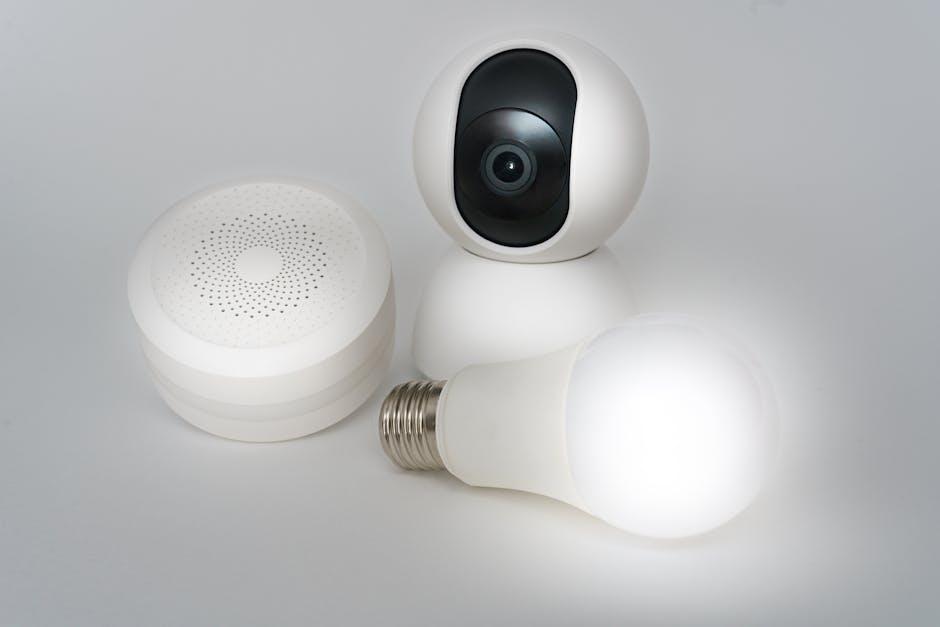In an era where technology effortlessly integrates into daily life, the humble door lock has undergone a remarkable transformation. No longer confined to traditional keys and tumblers, the smart lock offers a seamless blend of security and convenience that redefines how we protect our homes. Unlocking convenience means more than just turning a key-it’s about embracing innovation that adapts to our fast-paced world. This guide to smart lock installation will walk you through the essentials, arming you with the knowledge to enhance your home’s entryway with intelligent, user-friendly technology. Whether you’re a tech enthusiast or a curious homeowner, prepare to unlock a new realm of convenience.
Table of Contents
- Understanding the Benefits of Smart Locks for Modern Homes
- Choosing the Right Smart Lock Based on Security Features and Compatibility
- Step-by-Step Smart Lock Installation Tips for a Seamless Setup
- Optimizing Your Smart Lock Experience with Maintenance and Connectivity Strategies
- Wrapping Up

Understanding the Benefits of Smart Locks for Modern Homes
With advancements in technology seamlessly blending into daily life, smart locks have emerged as a pivotal upgrade for homeowners aiming to enhance security without sacrificing convenience. These sophisticated devices allow for keyless entry, often controlled via smartphone apps, biometric scans, or voice commands. This flexibility not only simplifies access management but also reduces the risks associated with traditional keys, such as losing them or unauthorized duplication. Beyond basic security, smart locks can be integrated with other smart home systems, providing real-time notifications and remote access controls that empower users to monitor and manage their home’s entry points from anywhere in the world.
Key benefits of outfitting your home with smart locks include:
- Enhanced security: Advanced encryption and unique entry methods minimize break-in risks.
- Convenience: No need to carry physical keys or worry about locking the door when you leave.
- Custom access: Temporary or permanent codes can be assigned to family, friends, or service providers.
- Activity tracking: Keeps a log of who enters and exits, allowing for full transparency.
| Feature | Classic Lock | Smart Lock |
|---|---|---|
| Access Control | Physical Keys | App, Codes, Biometrics |
| Remote Access | No | Yes |
| Activity Monitoring | No | Yes |
| Installation Complexity | Low | Moderate to High |

Choosing the Right Smart Lock Based on Security Features and Compatibility
When selecting a smart lock, prioritizing advanced security features is essential to ensure your home’s safety. Look for devices offering multi-factor authentication, such as a combination of PIN codes, biometric verification, and smartphone proximity detection. Features like auto-locking, tamper alerts, and encryption protocols provide an added layer of protection against potential breaches. Additionally, consider whether the lock supports firmware updates to keep its security measures up to date as technology evolves, ensuring your investment is future-proof.
Compatibility plays an equally important role in optimizing your smart lock experience. Evaluate how well the lock integrates with your existing smart home ecosystem, including voice assistants like Alexa, Google Assistant, or Apple HomeKit. Connectivity options, such as Wi-Fi, Bluetooth, or Z-Wave, determine the lock’s responsiveness and range. Below is a quick compatibility guide to help match your smart lock with common smart home hubs:
| Smart Lock Model | Voice Assistant | Connectivity | Smart Home Hub |
|---|---|---|---|
| SecureEntry Pro | Alexa, Google | Wi-Fi, Bluetooth | Amazon Echo, Google Nest |
| BioLock 360 | Apple HomeKit | Bluetooth, Z-Wave | Apple HomePod |
| Guardian Elite | Alexa, Google, Apple | Wi-Fi, Z-Wave | SmartThings, HomeKit |
Step-by-Step Smart Lock Installation Tips for a Seamless Setup
Begin your installation journey by carefully reviewing the smart lock’s user manual. This step is crucial as it unveils specific requirements and ensures compatibility with your door type. Before drilling any holes, use a template-often provided with the lock-to mark precise spots. Take your time to measure twice; a perfectly aligned lock not only functions flawlessly but also elevates your home’s security. If your door has unique features, consider adjustments such as trimming the latch or reinforcing the strike plate to enhance durability.
Next, focus on wiring and connectivity. If your smart lock requires batteries, opt for high-quality lithium types to extend life and reliability. Many models offer Bluetooth or Wi-Fi pairing-enable these before completing assembly to avoid repeated disassembly. Here’s a quick checklist to streamline this phase:
- Check battery orientation and contact points
- Test lock motor manually before final installation
- Sync lock with mobile app to confirm connectivity
- Program user codes or biometrics as needed
Optimizing Your Smart Lock Experience with Maintenance and Connectivity Strategies
Ensuring your smart lock functions seamlessly requires a regular maintenance routine combined with strategic connectivity practices. Start by periodically cleaning the lock’s surfaces with a soft cloth to keep sensors and keypads free from dust and debris. Don’t overlook the importance of battery health; replacing batteries before they run low helps avoid unexpected lockouts. Additionally, check for firmware updates frequently-many manufacturers release patches that optimize performance and security, which can be effortlessly installed through the lock’s companion app.
Connectivity is the backbone of a smart lock’s convenience, so maintaining a strong and stable connection is essential. Position your Wi-Fi router close to the door or use mesh networks to eliminate signal dropouts. For Bluetooth-enabled devices, ensure that your smartphone’s Bluetooth settings are always on, and consider setting up fallback access methods like a physical key or keypad code in case of connectivity issues. Here’s a handy checklist to keep your smart lock at peak performance:
- Regularly inspect battery levels and replace promptly
- Keep firmware updated via the smart lock app
- Maintain a clean lock surface free of dirt and moisture
- Optimize Wi-Fi signals with routers or extenders nearby
- Set alternate access methods like PIN codes or physical keys
| Maintenance Task | Recommended Frequency | Benefit |
|---|---|---|
| Battery Check | Monthly | Prevents downtime from dead batteries |
| Firmware Update | Quarterly | Enhances security and features |
| Surface Cleaning | Bi-weekly | Ensures sensor accuracy |
| Connectivity Review | Monthly | Maintains seamless control access |
Wrapping Up
As we step into an era where technology seamlessly intertwines with everyday life, smart locks stand as a testament to convenience meeting security. Unlocking the potential of your home begins with understanding the installation journey-a process that is as empowering as it is practical. Whether you’re upgrading your front door or enhancing your workspace, smart locks offer a blend of innovation and ease that transforms how we think about access. With the insights shared in this guide, you’re now equipped to embrace a smarter, more connected future-one turn, code, or tap at a time.





